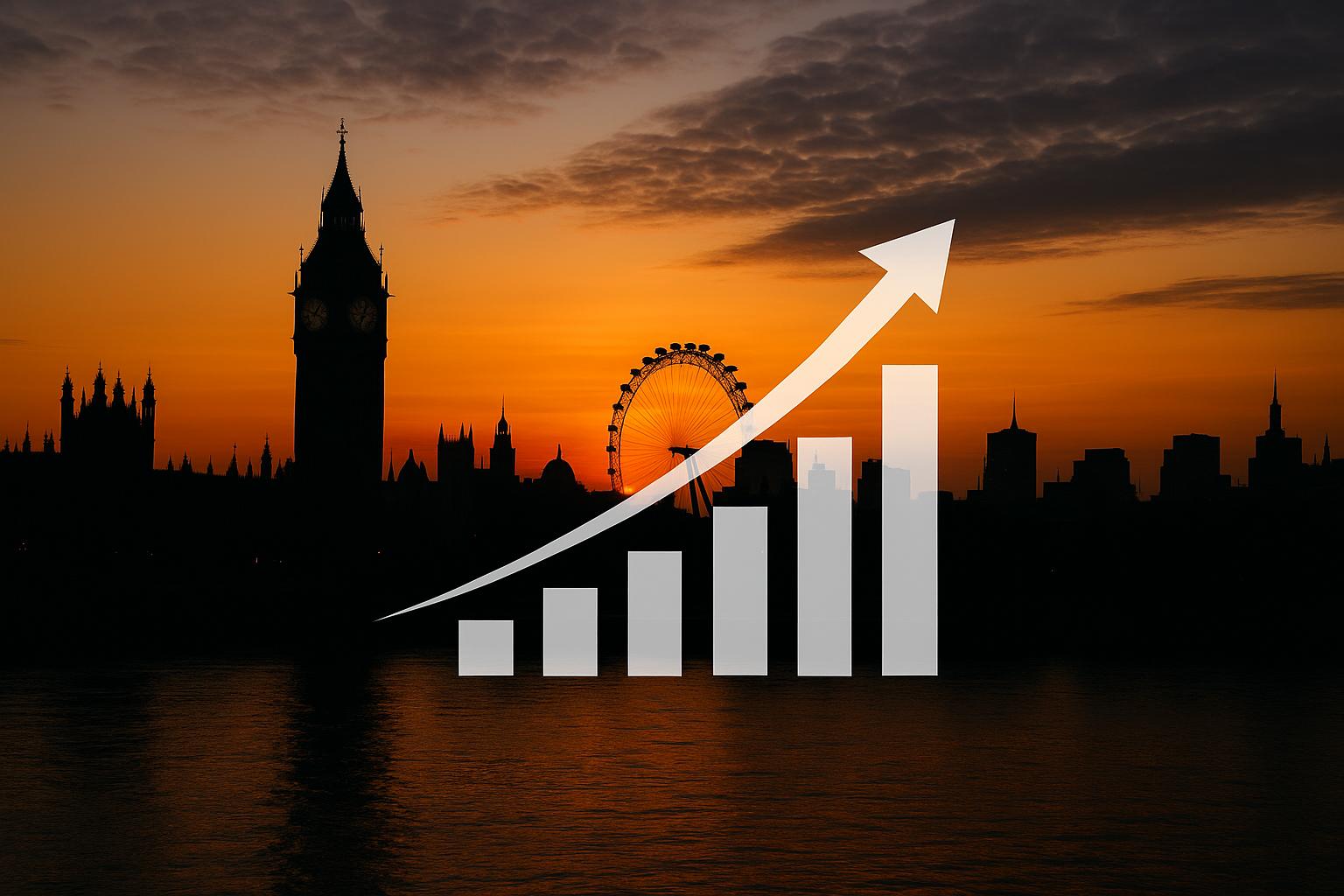The FTSE 100 reached another record high on Wednesday, buoyed by significant gains in electricity generator SSE and gold mining stocks amid a renewed rise in the precious metal price. The index closed at a new peak of 9,911.42, marking an 11.82 point increase, or 0.1%. Earlier in the session, the FTSE 100 set a fresh intra-day best at 9,930.09, propelled by strong performances in key sectors including energy, mining, and defence.
SSE led the rally with shares surging 17% following the company’s announcement of a substantial £2 billion equity raise to fund a transformative £33 billion investment plan over the next five years. This ambitious strategy aims to triple the company’s investment in the UK’s electricity networks by March 2030, underlining SSE’s commitment to upgrading the energy infrastructure and fostering a cleaner, more secure, and affordable power system. Martin Pibworth, SSE’s chief executive, described the plan as a “once-in-a-generation opportunity” to drive growth, with the firm projecting rising earnings and dividends through the decade. Analysts at Jefferies welcomed the clarity the plan brought to SSE’s balance sheet and growth prospects.
Gold miners also contributed notably to the FTSE 100’s gains, with precious metal prices climbing over $75 in a single day to around $4,184 an ounce. This uplift helped miners such as Endeavour Mining and Fresnillo advance by 3.5% and 1.8% respectively, continuing a bullish trend for commodities linked to inflation hedging and global economic uncertainties.
Market watchers observed that relatively steady bond yields – the UK 10-year gilt yield inched only slightly to 4.41% – and a softer pound were factors supporting the blue-chip-heavy index. Sterling weakened marginally against the US dollar, trading at around $1.3134, amid domestic political tensions which saw Prime Minister Sir Keir Starmer publicly deny authorising any attacks on cabinet ministers following Downing Street briefings alleging unrest and possible leadership challenges. Health Secretary Wes Streeting also dismissed rumours of a coup attempt. Despite the political noise, demand for FTSE 100 stocks remained resilient.
Sector-wise, banks, defence, and mining companies have benefited from the macroeconomic landscape of 2025, characterised by market volatility elsewhere, particularly in the US. Analyst Joshua Mahony from Scope Markets noted that the FTSE 100’s strong performance contrasts with the turbulence seen across the Atlantic, with investors favouring more traditional, lower volatility investments. The anticipation of a potential Bank of England rate cut next month, prompted by confidence in the labour market data showing some softening, adds to the domestic optimism supporting stocks, especially those more domestically focused.
Other notable movers included luxury goods firm Burberry, which rose 4.0% ahead of its half-year financial results, and insurer Aviva, which climbed 1.9%; the latter is expected to unveil new financial targets and provide updates on its acquisition of Direct Line Insurance. Conversely, Experian shares slipped 4.5% despite an upward revision in its revenue and margin guidance, reflecting market caution despite the company’s progress in AI-driven automation and customer personalisation. Auto Trader also retreated 3.7% after a downgrade from Bank of America, while Hiscox was downgraded by Jefferies.
On the broader market, the FTSE 250 index dipped marginally by 14.56 points to 22,135.32, pressured in part by housebuilder Taylor Wimpey, which fell 3.8% as it warned of softer market conditions amid ongoing budget uncertainty. Despite this, the firm maintained its full-year outlook for UK housing completions and group operating profit.
Internationally, European markets showed positive momentum with Paris’ CAC 40 and Frankfurt’s DAX 40 rising by 1.1% and 1.2% respectively. In the US, markets presented a mixed picture with the Dow Jones Industrial Average up 0.7%, while the S&P 500 and Nasdaq Composite declined slightly amid continued uncertainty over the federal government shutdown’s resolution. Treasury yields fell correspondingly, reflecting cautious investor sentiment.
The energy sector’s influence on the market was further underscored by steady Brent crude prices around $65.19 a barrel and the impact of recent sanctions on Russian oil entities, which have helped lift global crude prices. This trend has previously supported the FTSE’s gains, alongside robust results from major companies.
Looking ahead, the UK’s economic calendar will see important data releases including GDP, trade, and industrial production figures, which could influence market direction. Meanwhile, the corporate earnings season continues with Aviva, Burberry, B&M European Retail, and United Utilities scheduled to report, alongside trading updates from Persimmon and defence firm Rolls Royce, all closely watched by investors for cues on economic and sectoral performance.
Overall, the FTSE 100’s record-setting performance reflects a blend of strong corporate fundamentals, sector-specific tailwinds, particularly in energy and mining, and a relatively stable economic backdrop in the UK, even as political uncertainties and broader geopolitical risks persist.
📌 Reference Map:
- [1] (The Independent) - Paragraphs 1, 2, 3, 4, 5, 7, 8, 11, 12
- [2] (Reuters) - Paragraphs 4, 7, 10
- [3] (Investing.com) - Paragraph 3
- [4] (Analytics Insight) - Paragraph 2
- [5] (Yahoo Finance UK) - Paragraph 1, 4
- [6] (GB News) - Paragraph 10, 12
- [7] (Evening Standard) - Paragraph 1, 4
Source: Noah Wire Services
